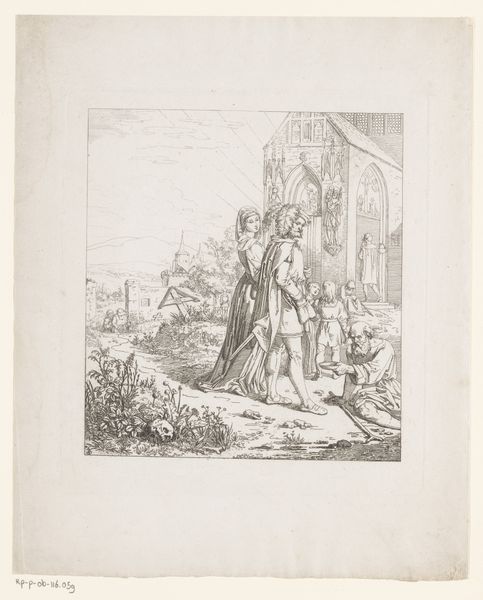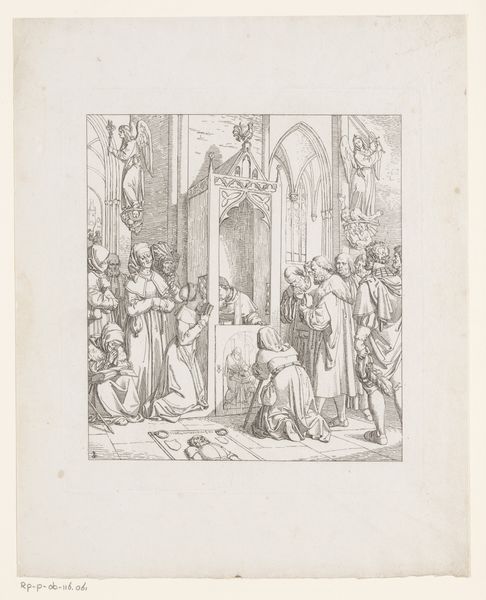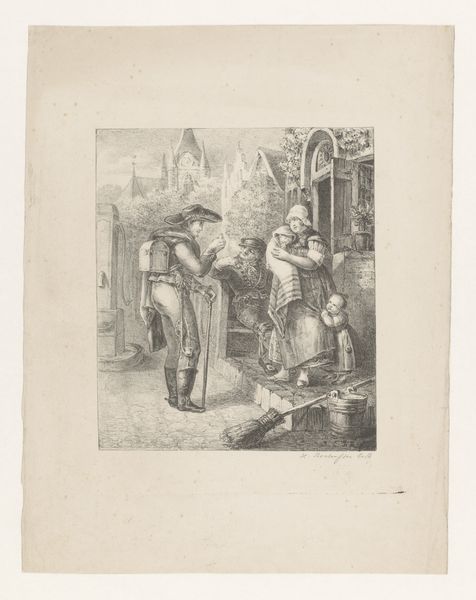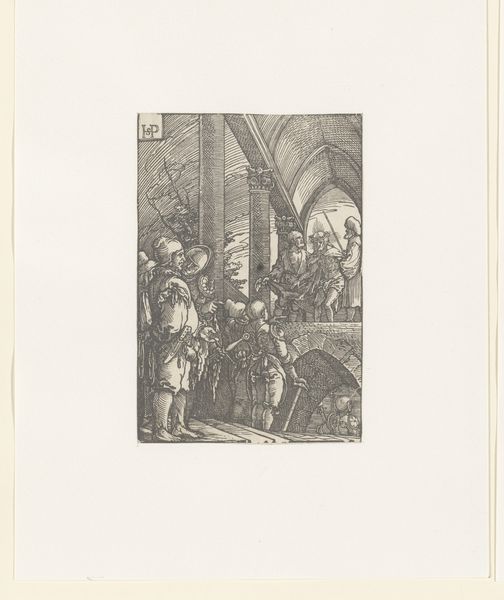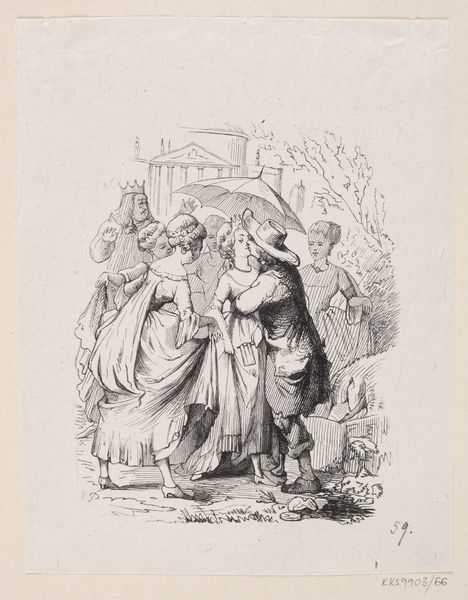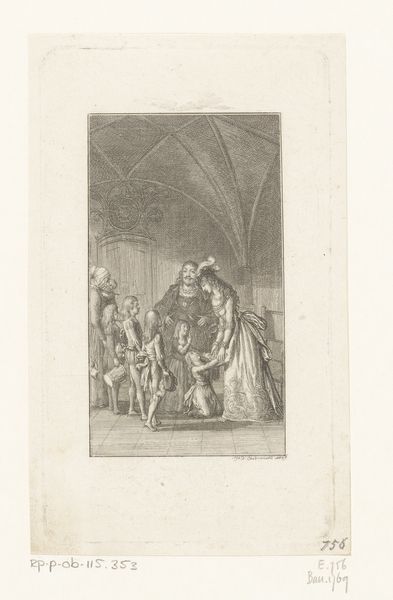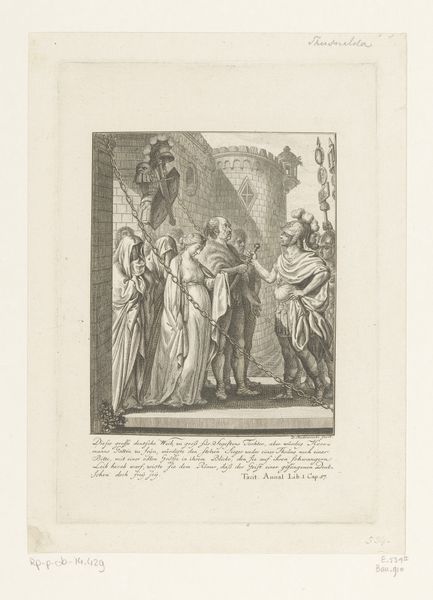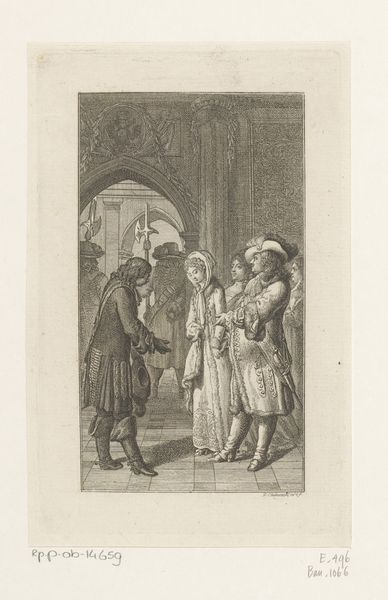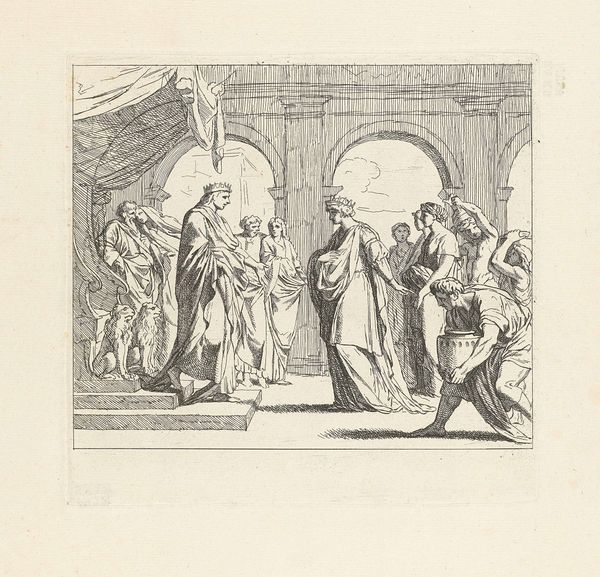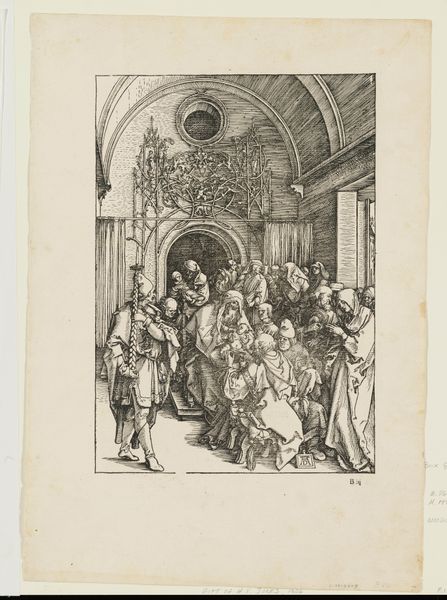
print, engraving
# print
#
pencil sketch
#
dog
#
figuration
#
romanticism
#
line
#
history-painting
#
engraving
Dimensions: height 230 mm, width 208 mm
Copyright: Rijks Museum: Open Domain
Curator: This is Joseph von Führich’s “Ridder neemt afscheid van zijn vrouw,” or “Knight Taking Leave of His Wife,” created around 1840. It’s an engraving, currently held at the Rijksmuseum. Editor: What immediately strikes me is the starkness of emotion captured through such meticulous lines. There's a profound sense of solemnity in their parting, the weight of duty palpable in the knight's stance, even a hint of premonition on his wife's face. Curator: Precisely. And considering the context of its production—early Romanticism—we can see how Führich engages with idealized notions of medieval life and chivalry. The printmaking process itself, the incising of lines onto a metal plate, reinforces a sense of resolute action, almost like etching a memory. The use of line is strategic and really dictates how you interpret this as line art can either indicate something literal or suggestive. Editor: Yes, notice the very controlled lines of the architecture versus the delicate almost ephemeral depiction of fabric. Consider too the social conditions surrounding reproductive prints in the 19th century and the ability of an image to be proliferated quickly and at various scales for mass consumption. The material conditions shaped its meaning, as well. The engraver's role in reproducing this romantic tableau is critical. Curator: Absolutely. And if we look beyond the immediately apparent, observe the inclusion of the dog. His presence reinforces themes of faithfulness and loyalty—attributes highly valued in the Romantic era and, of course, central to the ideals of chivalry. In a society obsessed with both status and tradition, you have all the social semiotics available to convey both social standing and commitment to an ideal. Editor: Right, a beautiful touch in the formal composition to amplify the symbolic narrative. By acknowledging not only a social reality and hierarchy, Führich invites deeper questioning around concepts of fidelity, longing, and duty within the framework of artistic craftsmanship. Curator: It all serves to elevate an everyday domestic scene to something grand and memorable. It invites viewers to reflect on notions of sacrifice and romantic heroism, viewed through the very specific lens of 19th-century ideals. Editor: Leaving us pondering on what is said through artistic expression on duty, and through which materiality that message is proliferated into a wide viewing audience, demonstrating the deep intricacies involved.
Comments
No comments
Be the first to comment and join the conversation on the ultimate creative platform.
